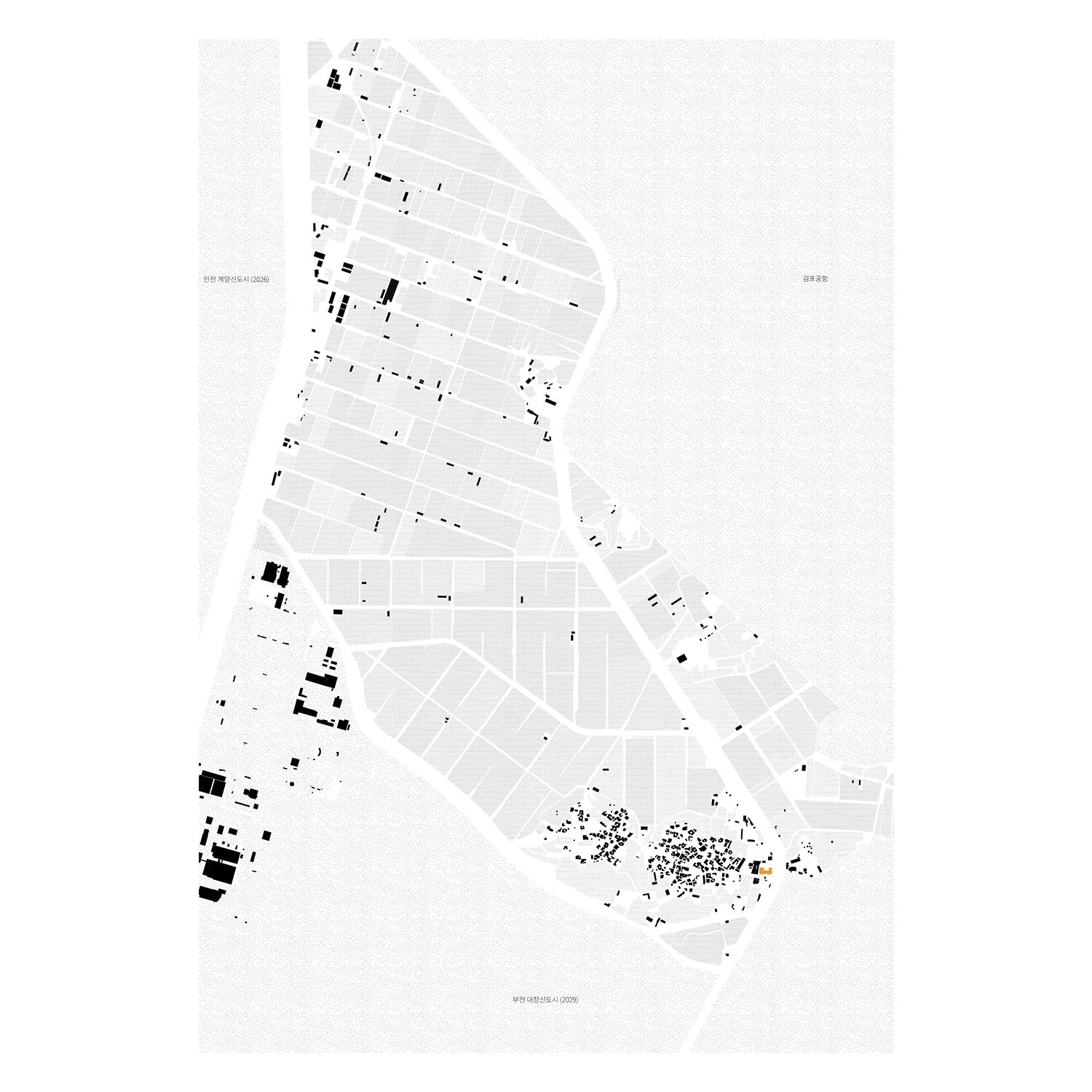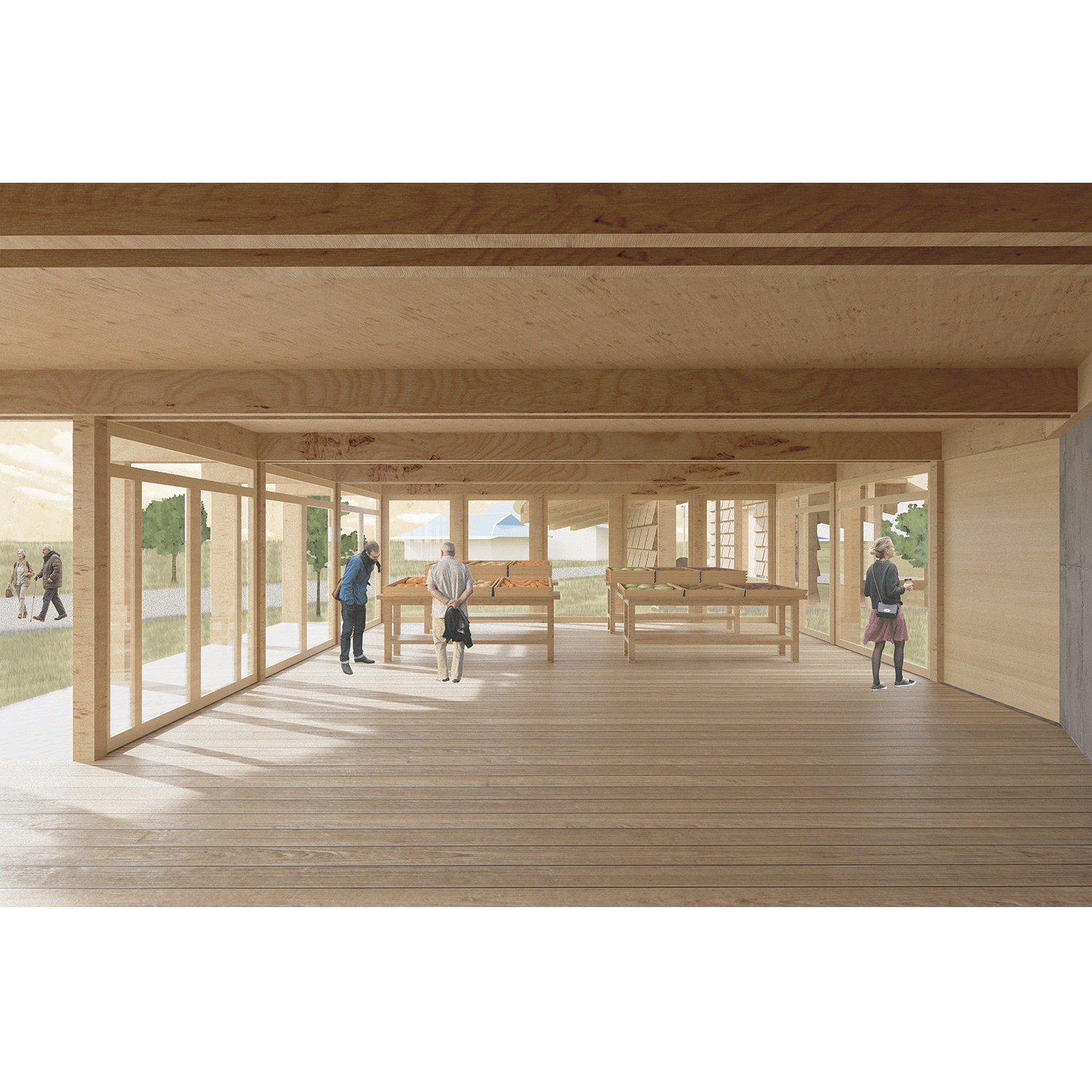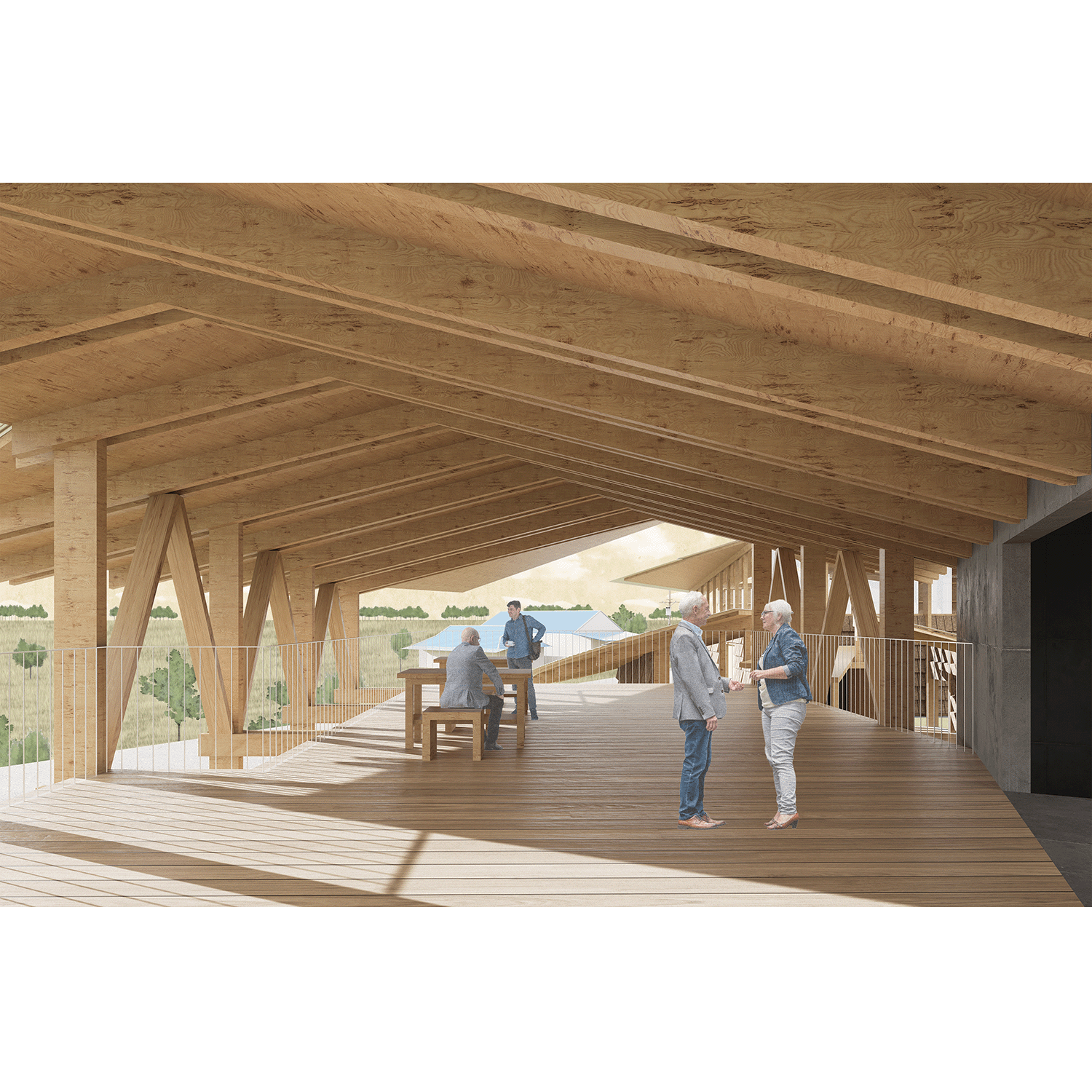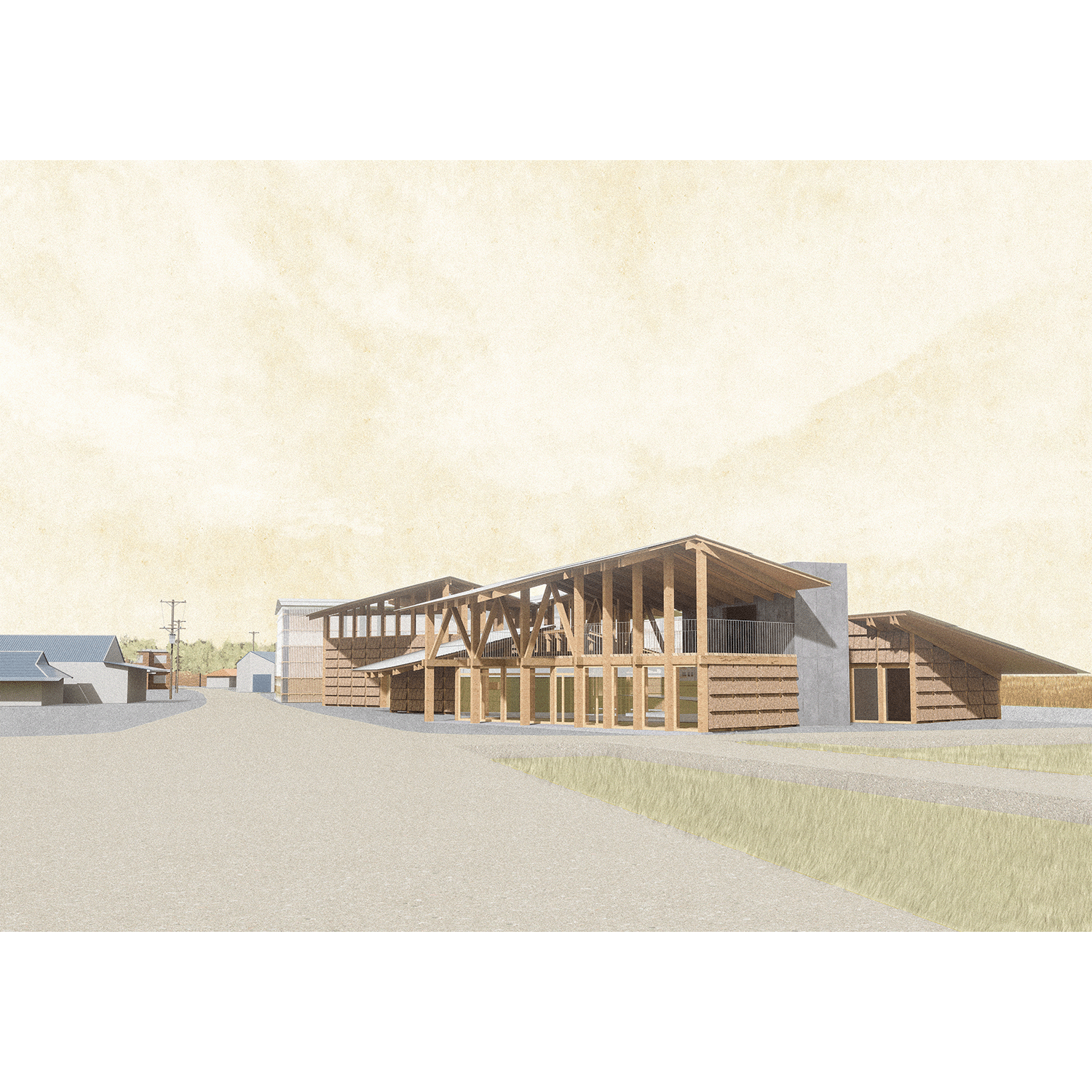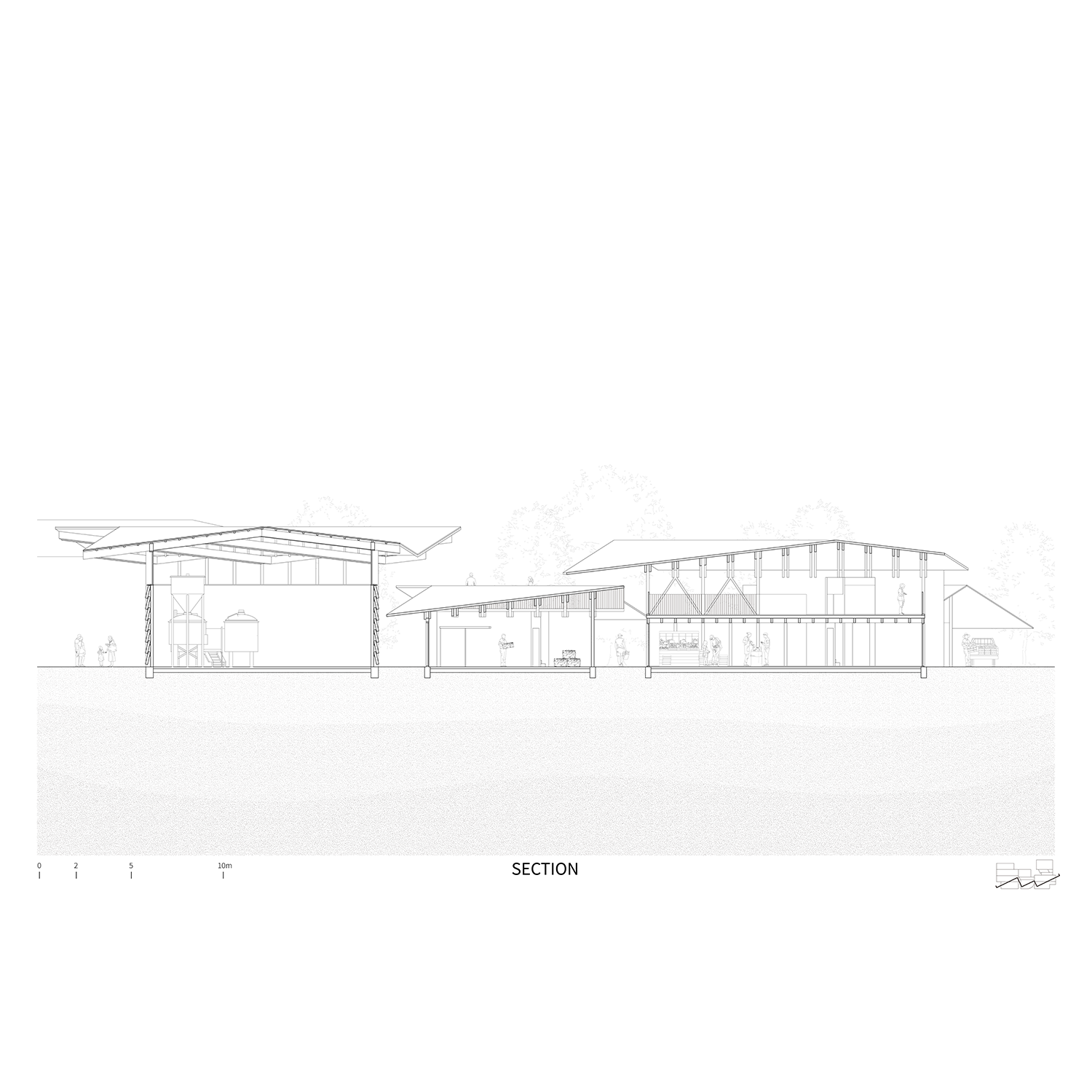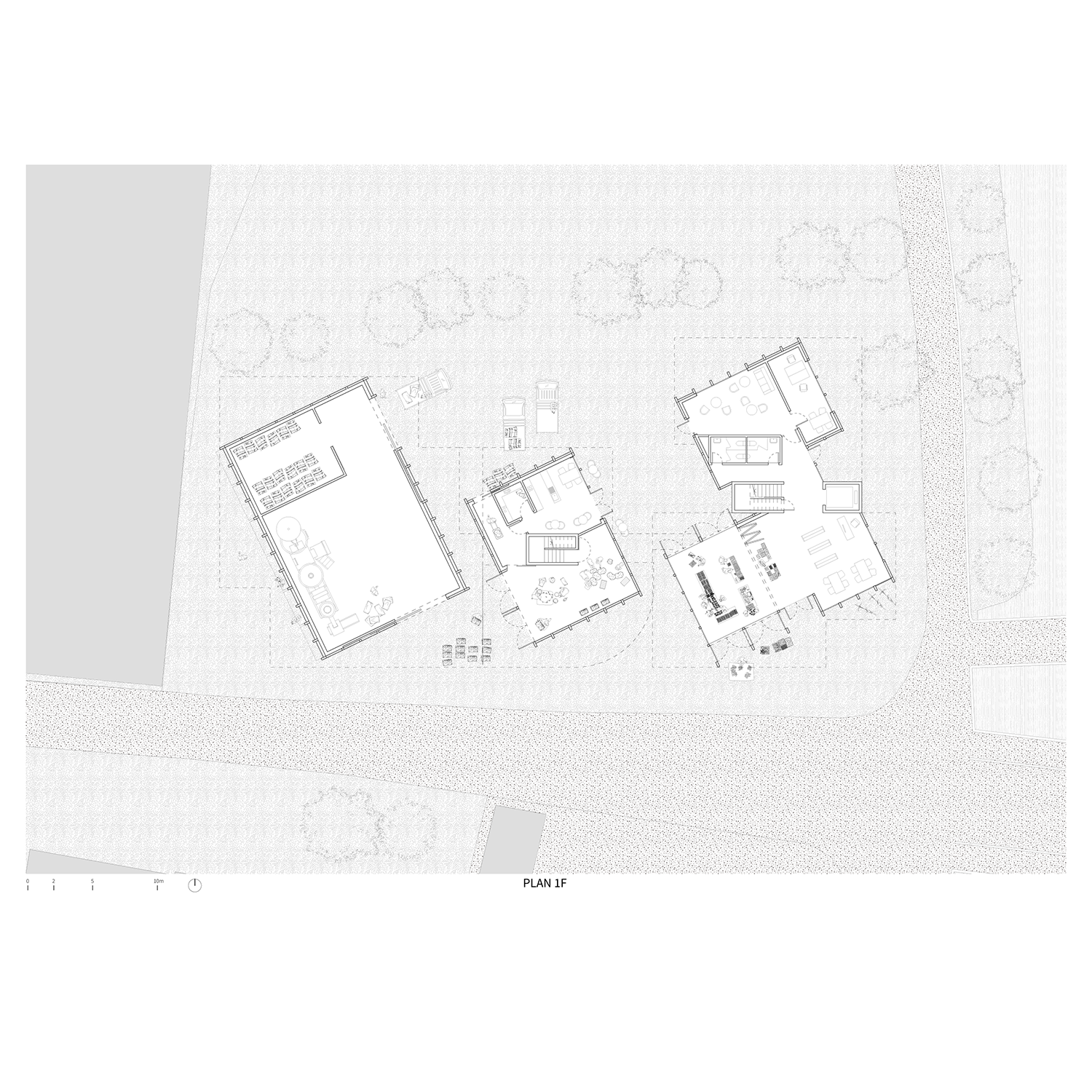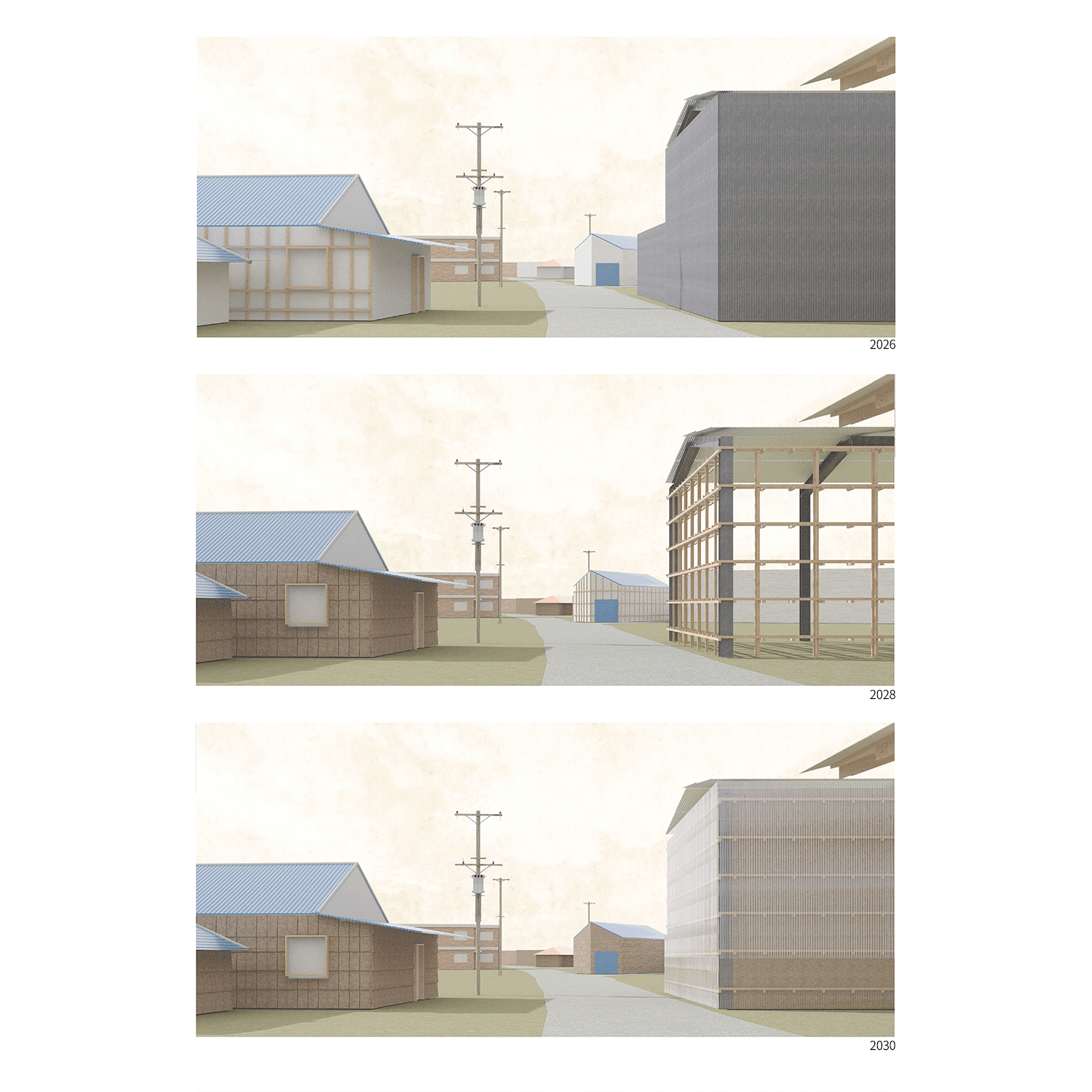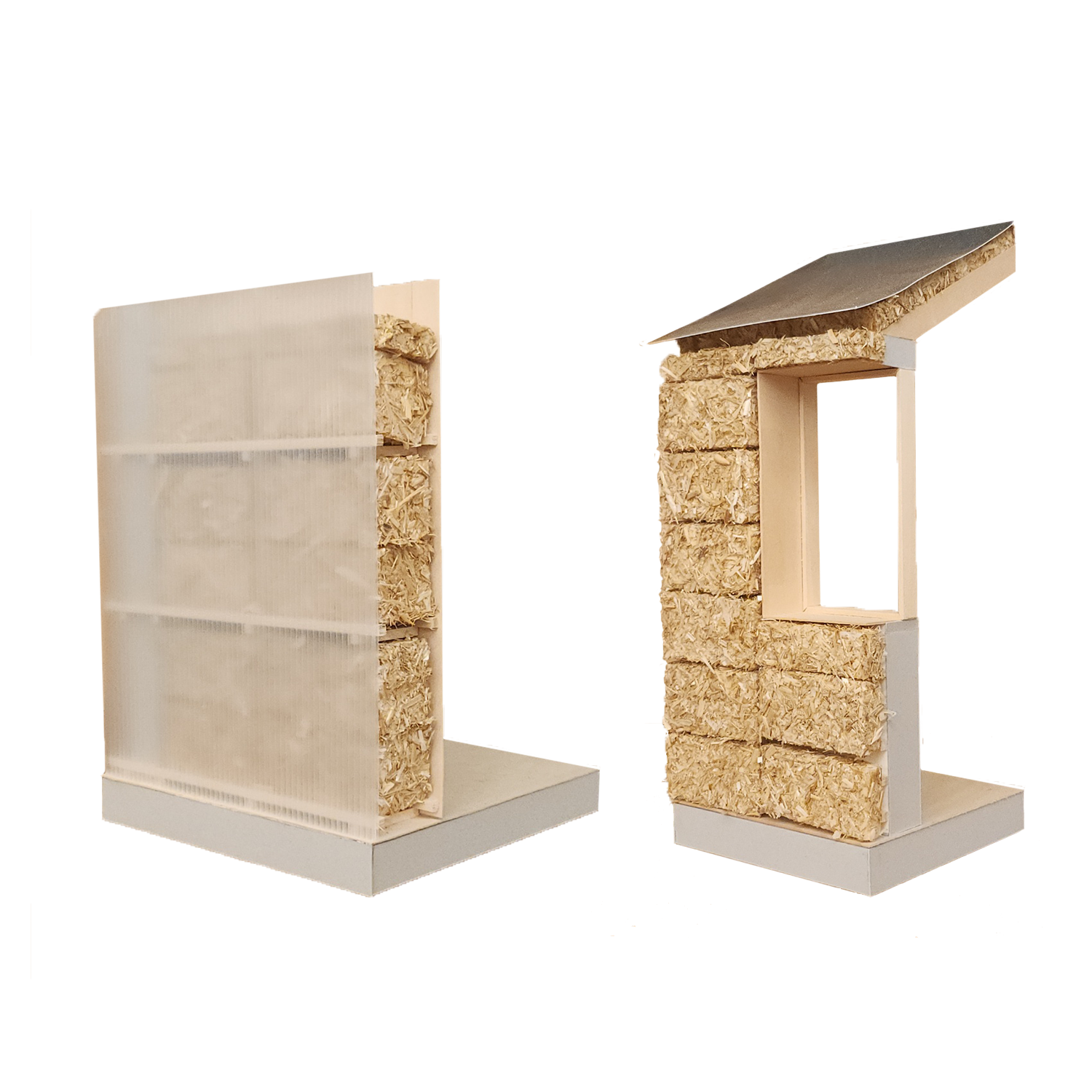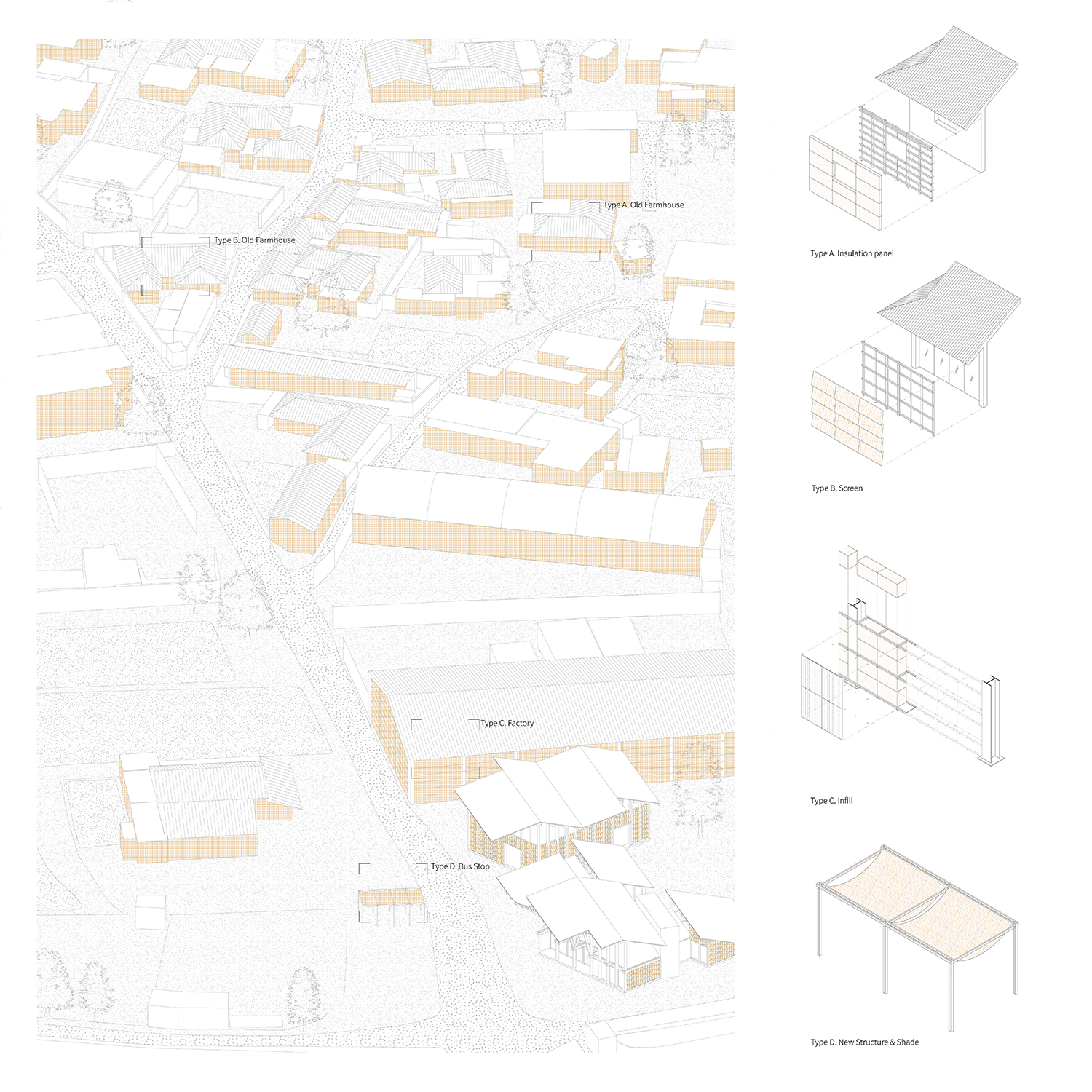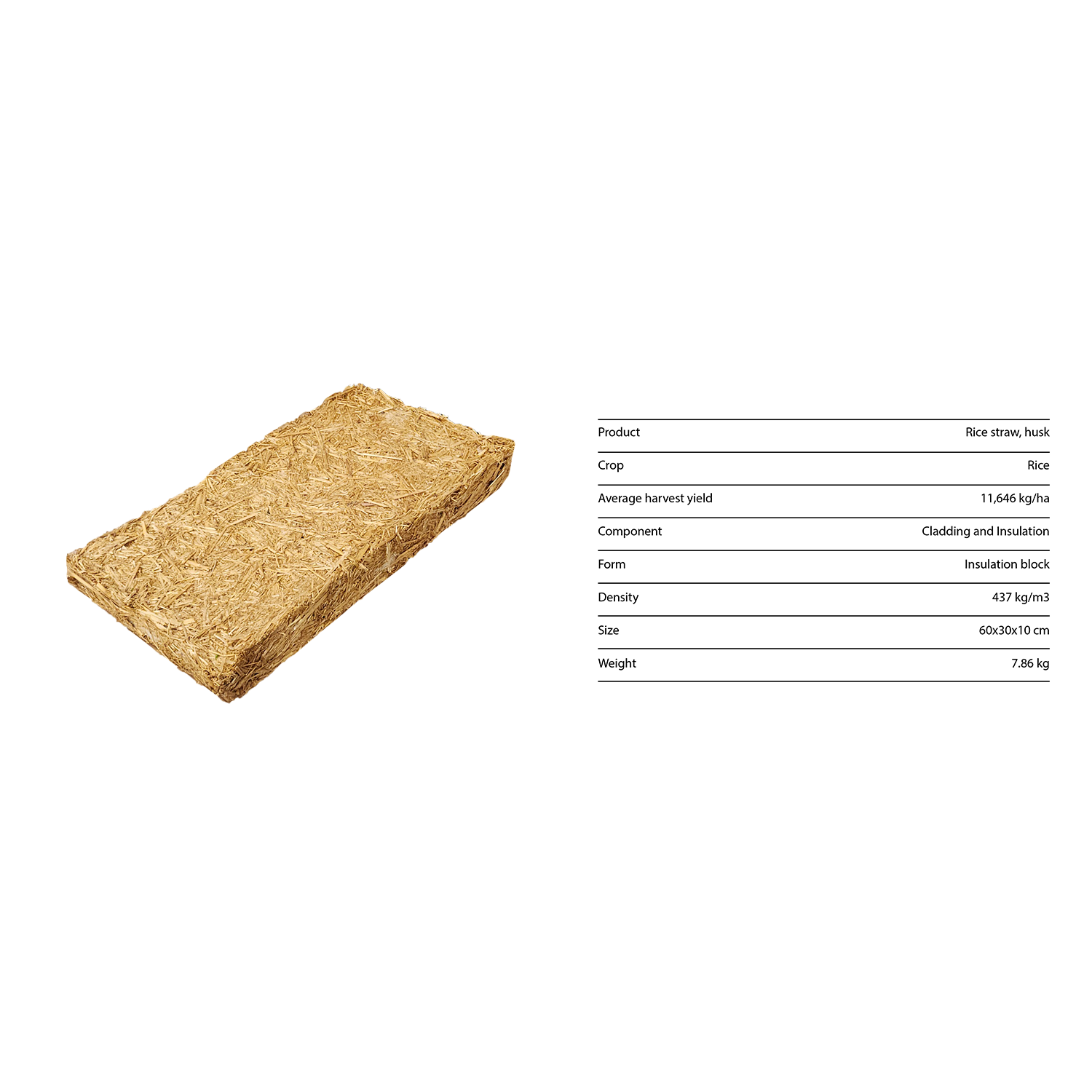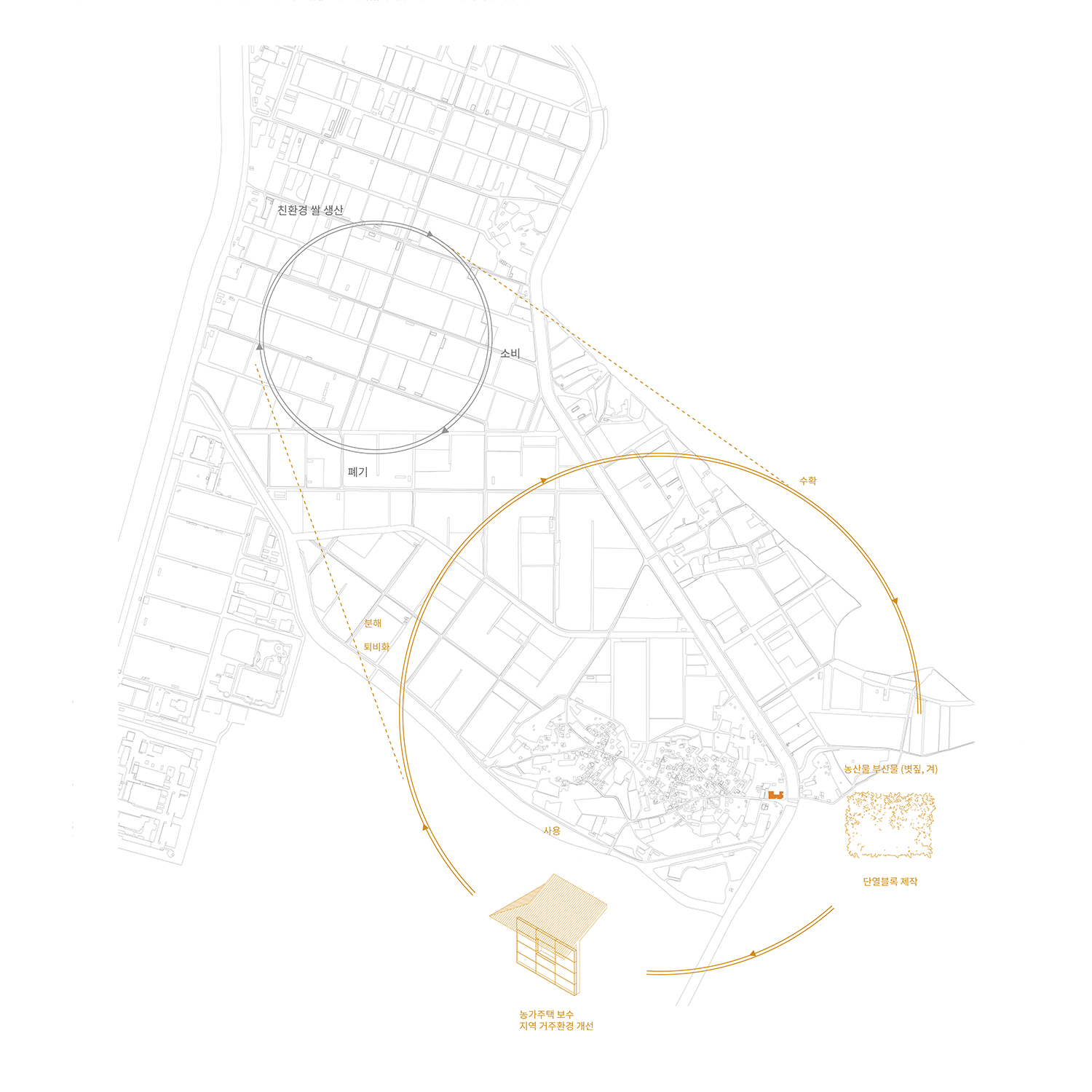김형석 _ 농촌 경관의 재구축
프로젝트는 농촌 풍경이 가진 고유한 가치를 인식하는 것에서 출발한다. 새마을운동 당시 농촌 환경개선이 근대화와 발전에 초점을 두었다면, 현재의 농촌 환경 개선은 농촌이 가진 고유한 가치를 부각하고 보존하는 것에 초점을 두어야 한다. 그러나 현재 농촌 풍경은 거주민의 삶과 단절된, 도시에서 밀려 나온 부산물로 채워지고 있으며, 줄어드는 인구와 노후화된 거주환경으로 인해 농촌성이 상실될 위기에 있다.
사이트는 부천시 대장안마을에 위치한다. 서울과 부천에 걸친 너른 김포평야에서 재배되는 쌀을 수도권에 공급하는 마을이다. 이곳은 현재 건축법상 단열 기준을 충족하지 못하는 낡은 7~80년대의 농가주택과 다른 주거 건물, 야적장, 창고가 뒤섞여 아무렇게나 배치돼 있어 농촌성을 드러내지 못한다. 이러한 상황 속에서 지역의 낙후된 주거 환경을 개선하는 동시에, 지역 주민의 농촌 생활에 지속가능성을 부여해, 결과적으로 농촌성을 회복하는 프로젝트를 제안한다.
이 프로젝트는 농산 부산물 재활용을 기반으로, 마을 재생의 초석을 놓는 작업이다. 사이트에 놓이는 건축물은 마을의 농업 지속가능성을 높이고, 재활용을 용이하게 하는 프로그램으로 구성된다. 농업 활동에서 발생하는 볏짚, 겨 등 부산물을 이곳에서 단열 블록으로 가공한다. 이 블록은 지역의 노령인구를 고려해 크기와 무게가 결정된다. 지역 주민은 필요에 의해 자발적으로 주거 환경을 개선하는 데 참여한다. 이러한 행위로 인해, 마을은 점차 일관된 풍경으로 정리되며, 농가주택은 현재의 단열 기준에 맞게 개선된다.
지역 주민의 필요에 의해 시작된 자원 재활용은, 단순히 주거 환경 개선 뿐만 아니라, 자원을 순환하고 탄소배출을 저감하며, 마을 전체를 하나로 묶어주는 공동의 행위를 발생한다. 더 나아가 회복된 농촌 풍경이 추후 관광자원으로 개발돼, 새로운 프로그램을 유입하기를 기대한다.
This project begins with the recognition of the intrinsic value embedded in rural landscapes. While the Saemaul Undong (New Village Movement) focused on modernization and development during its rural improvement efforts, the contemporary approach to enhancing rural environments must instead prioritize the preservation and amplification of their inherent qualities. Today, however, rural landscapes are increasingly filled with residual elements displaced from urban areas, bearing little relation to the lives of local residents. Simultaneously, the decline in population and deterioration of existing housing threaten the very essence of rurality.
The project site is located in Daejang Village, Bucheon, situated within the expansive Gimpo Plain that stretches between Seoul and Bucheon. This village plays a significant role in supplying rice to the greater Seoul metropolitan area. Despite this, the area is characterized by a disorderly mix of outdated rural houses from the 1970s and 1980s that fail to meet current insulation standards, as well as warehouses, storage yards, and scattered residential structures—none of which reflect the identity of a rural landscape. In response to these conditions, the project proposes a strategy to improve substandard residential environments while enhancing the sustainability of rural life for local residents—ultimately restoring the village's rural character.
The core of the project lies in a rural regeneration framework based on the reuse of agricultural by-products. The proposed architectural intervention comprises programs that support agricultural sustainability and facilitate recycling processes. By-products such as rice straw and husks are processed on-site into insulation blocks. These blocks are specifically designed in size and weight to accommodate the aging local population. Residents are encouraged to voluntarily participate in upgrading their own homes using these materials, fostering community involvement in the transformation process.
Through such collective actions, the village gradually adopts a cohesive visual identity, and its rural housing stock is upgraded to meet contemporary thermal performance standards. This cycle of resource reuse—initiated by local needs—not only improves the built environment but also reduces carbon emissions and generates communal practices that bind the village together. Moreover, the revitalized rural landscape is envisioned to evolve into a potential resource for tourism, introducing new programs and possibilities for the community’s future.
